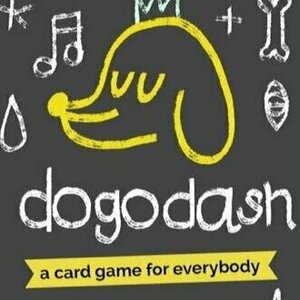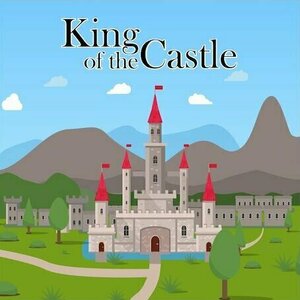
Lotería ¡Cántamelas! - Mexican Bingo
Games, Entertainment and Stickers
App
Play the most popular game in Mexico, now in English! Experience what all your Mexican friends are...

A Fairy Tale About Love: Wedding Graphic Design
Book
A wedding is an invitation for friends and family to witness the strength of a couple's love. As...
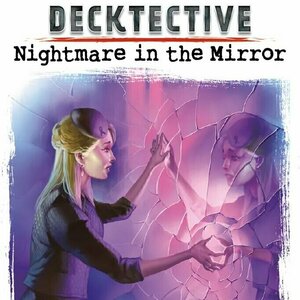
Decktective: Nightmare in the Mirror
Tabletop Game
Decktective: Nightmare in the Mirror is a co-operative investigation game, featuring a 3D crime...
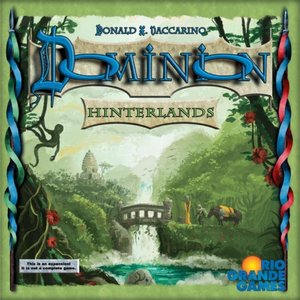
Dominion: Hinterlands
Tabletop Game
The world is big and your kingdom small. Small when compared to the world, that is; it’s...
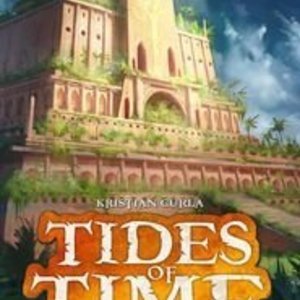
Tides of Time
Tabletop Game
Play as an ancient civilization as they prosper and collapse through time. Build gigantic monuments,...
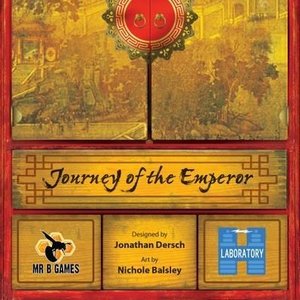
Journey of the Emperor
Tabletop Game
In Journey of the Emperor players are attempting to create the best experience for the emperor...
Purple Phoenix Games (2266 KP) rated King of the Castle in Tabletop Games
Jul 2, 2020
Disclaimer: We were provided a prototype copy of this game for the purposes of this preview. The components pictured are not final. Also, I do not plan to detail the entire rulebook in this review, but rather discuss the main rules and overall flow of the game. Keep an eye out for the Kickstarter launching later this fall! -L
King of the Castle is a game of hand management, grid movement, and take that in which players are battling to be the first to capture and hold the throne. Played over a series of turns, players will move around the board, draw cards, and battle opponents to hinder their progress. To setup, each player is given a Character card at random, selects a Meeple in their chosen color, and places it on one of the various Start spaces on the game board. Shuffle all other cards and place them in a draw deck. Select a player to be the first player, and you are ready to begin!
On your turn, you will take a combination of 2 actions. Those combos are: Move 1 space and draw 1 card, Move 2 spaces, or Draw 2 cards. It is important to note that diagonal movement is not allowed! There are 2 types of cards that can be drawn: Potion cards (special powers/abilities) and Army cards (strength points for duels). Once you have performed your 2 actions, and played any Potion cards from your hand that you want, your turn ends. The game moves on to the next player. If you land on the same space as an opponent, you must duel each other. The dueling players will select as many Army cards from their hand as they wish to play, and will lay them down simultaneously. They may then play up to 3 Potion cards from their hand to influence the strength points of either player, as stated on the Potion cards. Whomever has the most strength points wins the duel, and gets to remain on that space. The loser must discard a card, and is knocked back to the nearest Exit space (depending on their current placement on the board).
In the center of the board are 2 Tower spaces. You must ‘capture’ a Tower in order to fulfill the win conditions. To capture a Tower, you must land on that space and occupy it for one full turn. Once you have captured a Tower, you may move to capture the Throne. The centermost space of the board is the Throne. To capture the Throne, you must first have captured a Tower, and you must enter the Throne space and occupy it for 3 complete and consecutive turns. When you are capturing a Tower or the Throne, you can still be attacked by opponents – so it is important to have a strong hand of cards to ward off enemies and continue your occupation of these valuable spaces. Once a player has occupied the Throne space for 3 consecutive turns, the game ends and that player is named King!
So with all of that said, how does King of the Castle play? Overall, I would say it’s a nice and simple little game. The concept itself is easy to comprehend – draw cards, duel opponents, capture a Tower, and ultimately, the Throne. There is a decent amount of strategy required for success. Not only are you racing to the center of the board, but you also need to amass a strong hand of cards with which you can hinder your opponents. Choosing when to use your Potion cards can affect not only your strategy, but those of your enemies as well. Is your strategy to skirt around your opponents and try to sneak by unnoticed? Or will you duel enemies at every opportunity, building up your Army and continually kicking the other players to the Exit spaces on the board? The idea of having to ‘capture’ certain spaces by occupying them for consecutive turns is an interesting one, and adds a unique twist to this game. You must be able to defend yourself in those spaces, or risk being kicked back to an Exit, requiring you to start that journey over again. It is a simple game to play, but not necessarily one that is easy to win, and I really like that.
Components. As I stated earlier, this is only a prototype version of the game, and I anticipate that there will be some changes for final production. That being said, the board in this prototype is nice and sturdy, the cards are easy to manipulate, and the Meeples are your standard wooden bits. So overall, these prototype components are off to a great start. The artwork and overall style of the game are a different story. The current artwork is pretty childish and unrefined. Again, this being only a prototype, I anticipate that the artwork will be overhauled and revised for final production. The artwork on the board is pretty basic as well, which is not necessarily a bad thing, it just doesn’t feel immersive or engaging for players. The spaces of the board are different colors to denote different areas of play, but nothing is labeled on the board, which can create some confusion at first as to the flow of movement around the board. The rules themselves need to be revised and edited for clarity. There is just a bit of ambiguity that leaves questions unanswered, but nothing that cannot be fixed.
All in all, the concept of King of the Castle is a solid one. It combines hand management, grid movement, and take that in a way that all 3 mechanics complement and work well with each other. The gameplay is lighthearted and relatively simple, which results in a fun and fast game. With some refining of the style and editing of the rules, I am sure that this game will truly shine. I look forward to following its progress, and am eager to see the Kickstarter campaign later this year. Keep your eyes on King of the Castle, because it’s shaping up to be a solid game.
Purple Phoenix Games (2266 KP) rated Dirt Dog in Tabletop Games
Oct 22, 2020
Dirt Dogs is a two or four player game where each side will be building an obstacle course through which the other side will run down a quarry animal. The obstacle course is a series of cards with icons needed to satisfy in order to pass, and each dog runner will have stats that correspond to these challenges that can also be manipulated with additional card play.
DISCLAIMER: We were provided a prototype copy of this game for the purposes of this review. These are preview copy components, and I do not know for sure if the final components will be different from these shown. You are invited to back the game through the Kickstarter campaign, or purchase through any retailers stocking it after fulfillment. -T
To setup, set aside the Entrance and Quarry cards from the large deck of brown-backed Burrow cards. Shuffle the Burrow cards to form a draw deck, and shuffle the gold-backed Obedience cards into their own pile. Each player (or team, but for this preview I will be reviewing from a two-player game perspective) will choose a dog breed card to use and place it in front of themselves. The icon on the bottom right hand side of the dog card signifies Moxie and an amount of Moxie tokens (bones) will be collected for use by the player. Reveal and place in an offer 12 Obedience cards to be drafted by the players. During the first round of play one player will be the builder and the other will be the first runner. Each player will draw five Burrow cards to begin and the game may now commence!
Dirt Dog will last three or more rounds (depending on what the players decide) and each round will have the roles of first builder and runner reversed. The builder will assemble an obstacle course of Burrow cards from their hand along with an Entrance to get in and a Quarry at the end. The cards are multipurpose in that the right side of the card lists obstacle tests the dogs will need to meet or surpass in order to clear it, and the left side includes icons that can be used by the runner player to assist their dog in a successful run. Similarly, Obedience cards may be played during the run to help overcome a particularly difficult obstacle, but then it will be unavailable for use to build the subsequent Burrow course.
Once a course has been decided and placed before the runner, they will analyze the tests on each card encountered and use their dog stats in addition to any cards they would like to play from hand. Should a runner successfully complete a course and capture the Quarry at the end they will collect the Quarry card and immediately add Dachshund tokens (weineeples?) to increase their stats per the card for the rest of the game.
Players then switch roles and whichever player ends the round with the most remaining Moxie will win the round and collect the Round Winner token (black animeeple because I can’t make out which breed it might be) notating such. The winner is the player who collected the most Round Winner tokens at the end of the three (or more) rounds!
Components. Again, this is a prototype copy of the game, and as such the components will not be exactly as shown in these photos. That said, for a prototype copy, the components are pretty decent! The cards are all nice, and the art on them is suuuuper cute. The layout of the cards is ok, and the iconography is easy to understand. The tokens and different -eeples are wonderful, though those may be different in the final version. It all depends on Kickstarter success though, folks, so you know the drill with backing games.
Dirt Dog reminds me of a couple games I have played, or at least certain mechanics. The building of the burrow runs reminds me of Boss Monster dungeon building as you are trying to foil the runner’s progress, but they can also use cards from hand to help overcome the obstacles. Also, many games now are including multi-use cards in the design, and I absolutely love it. Having to really determine the best use for a card – now during my run, or later to build a run for my opponent – is a wonderful layer that I enjoy. Of course building up a character’s stats is a mechanic I wish more games used. I mean, what’s the best part about playing RPGs? It’s level-up day!
This one is very cute to play and is quite light. I may have found a winning dog to use every time, but I will not spoil that for you. If it seems to become a problem in your plays, I suggest just removing that dog from those available to help overcome that. Remember – the winner of the round is the dog that ends the round with the most Moxie. That said, I still very much enjoy Dirt Dog. The art is great, features at least one of my previous breeds, and leaves itself open for expansions of new breeds and obstacles to be added later.
If you are looking for a cute dog-themed game with light rules and pretty good replayability, I suggest you check out Dirt Dog. It’s a fun and quick little card game that you can even play with AP-prone gamers as the choices are not necessarily do-or-die. Plus, enjoy the art along the way. It’s very nice. You are invited to back the game on Kickstarter that launches soon! Tell them Purple Phoenix Games sent you or I’ll sick a Jack Russell on your yard to dig dig dig until they wear themselves out. At least, that’s what MY JRT used to do…
